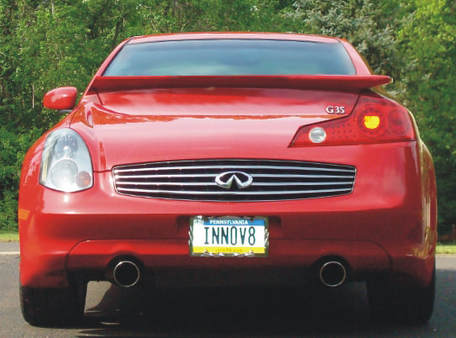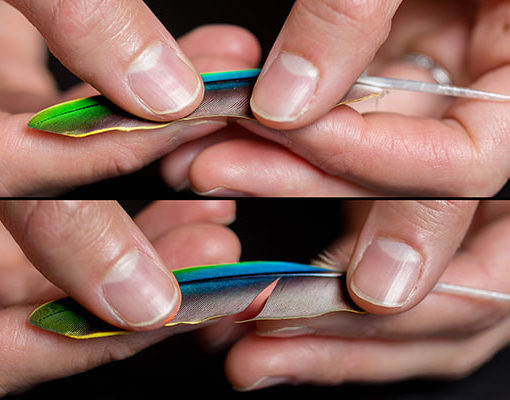Dr Stefan Szyniszewski on a novel materials invention that combines 3-D-woven technical textile composite sheets with select unbonded fibers
The Ride of the Future May Get Less Bumpy
Q&A With Dr Stefan SzyniszewskiTransportation may soon become smoother and quieter as scientists from University of Surrey have joined forces with Johns Hopkins University in Baltimore and the University of California to develop a material that has high stiffness and damping. The process combined 3D-woven technical textile composite sheets with selected unbonded fibers, allowing the inside of the material to move and absorb vibrations, while the surrounding material remains rigid. The scientists believe the new material could usher in a new wave of trains, cars, and aircrafts, allowing customers to experience little to no vibration during their travels. Dr Stefan Szyniszewski, lead author of the study published in Scientific Reports and Assistant Professor of Materials and Structures at the University of Surrey, answered some questions for Innov8 Updates on this novel material:
Innov8 Updates (IU). Do you envision future generations incorporating polymeric ‘moving’ fibers to optimize the damping? IU. Do you envision these materials to be used for broad use in structural parts, like a frame or suspension, or for more limited use in sound absorbing parts? IU. Can these 3D-woven structures be mass produced using current infrastructure? IU. How will these materials be shaped into parts needed for transportation applications? IU. How great is your flexibility in choosing the metals of construction, have you prepared any ‘mixed-metal’ examples? IU. What inspired you to prepare these novel structures? Innov8 Updates thanks Dr Szyniszewski for insights into this fascinating technology. His work shows the importance of building a strong experience base and then applying it to new areas. We look forward to further developments in this area in the future. The full text of Dr Szyniszewski’s article may be found here. |

Dr Stefan Szyniszewski on a novel materials invention that combines 3-D-woven technical textile composite sheets with select unbonded fibers
Q&A With Dr Stefan SzyniszewskiTransportation may soon become smoother and quieter as scientists from University of Surrey have joined forces with Johns Hopkins University in Baltimore and the University of California to develop a material that has high stiffness and damping. The process combined 3D-woven technical textile composite sheets with selected unbonded fibers, allowing the inside of the material to move and absorb vibrations, while the surrounding material remains rigid. The scientists believe the new material could usher in a new wave of trains, cars, and aircrafts, allowing customers to experience little to no vibration during their travels. Dr Stefan Szyniszewski, lead author of the study published in Scientific Reports and Assistant Professor of Materials and Structures at the University of Surrey, answered some questions for Innov8 Updates on this novel material:
Innov8 Updates (IU). Do you envision future generations incorporating polymeric ‘moving’ fibers to optimize the damping? IU. Do you envision these materials to be used for broad use in structural parts, like a frame or suspension, or for more limited use in sound absorbing parts? IU. Can these 3D-woven structures be mass produced using current infrastructure? IU. How will these materials be shaped into parts needed for transportation applications? IU. How great is your flexibility in choosing the metals of construction, have you prepared any ‘mixed-metal’ examples? IU. What inspired you to prepare these novel structures? Innov8 Updates thanks Dr Szyniszewski for insights into this fascinating technology. His work shows the importance of building a strong experience base and then applying it to new areas. We look forward to further developments in this area in the future. The full text of Dr Szyniszewski’s article may be found here. |

Dr Stefan Szyniszewski on a novel materials invention that combines 3-D-woven technical textile composite sheets with select unbonded fibers
Q&A With Dr Stefan SzyniszewskiTransportation may soon become smoother and quieter as scientists from University of Surrey have joined forces with Johns Hopkins University in Baltimore and the University of California to develop a material that has high stiffness and damping. The process combined 3D-woven technical textile composite sheets with selected unbonded fibers, allowing the inside of the material to move and absorb vibrations, while the surrounding material remains rigid. The scientists believe the new material could usher in a new wave of trains, cars, and aircrafts, allowing customers to experience little to no vibration during their travels. Dr Stefan Szyniszewski, lead author of the study published in Scientific Reports and Assistant Professor of Materials and Structures at the University of Surrey, answered some questions for Innov8 Updates on this novel material:
Innov8 Updates (IU). Do you envision future generations incorporating polymeric ‘moving’ fibers to optimize the damping? IU. Do you envision these materials to be used for broad use in structural parts, like a frame or suspension, or for more limited use in sound absorbing parts? IU. Can these 3D-woven structures be mass produced using current infrastructure? IU. How will these materials be shaped into parts needed for transportation applications? IU. How great is your flexibility in choosing the metals of construction, have you prepared any ‘mixed-metal’ examples? IU. What inspired you to prepare these novel structures? Innov8 Updates thanks Dr Szyniszewski for insights into this fascinating technology. His work shows the importance of building a strong experience base and then applying it to new areas. We look forward to further developments in this area in the future. The full text of Dr Szyniszewski’s article may be found here. |




